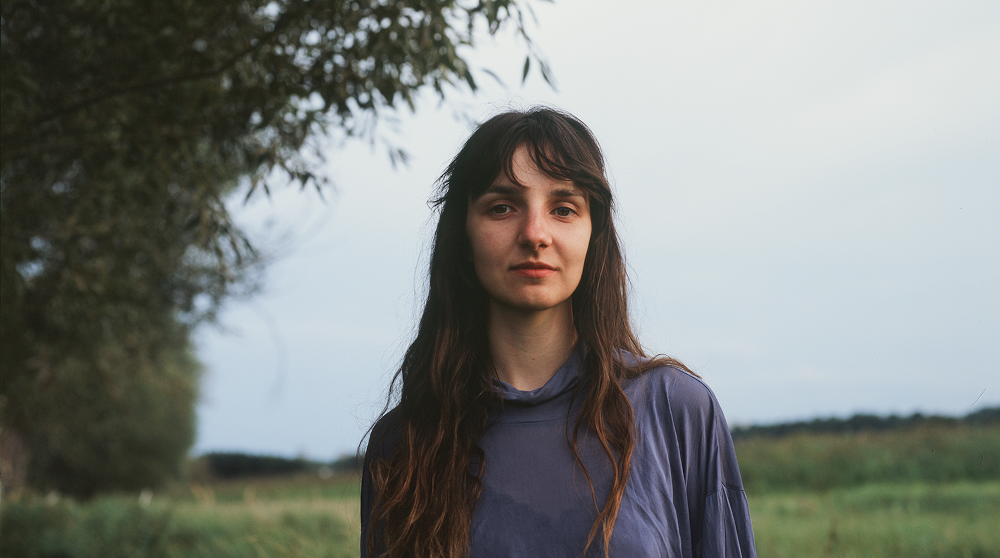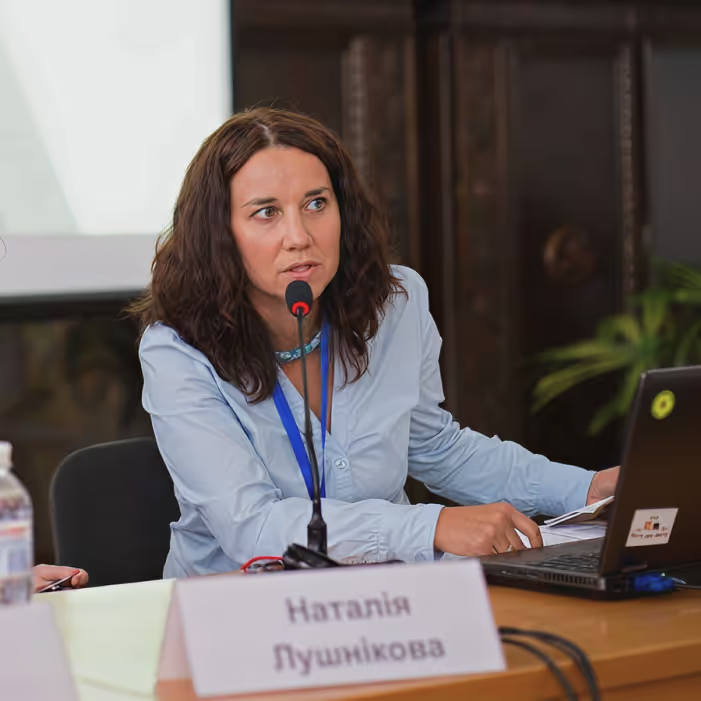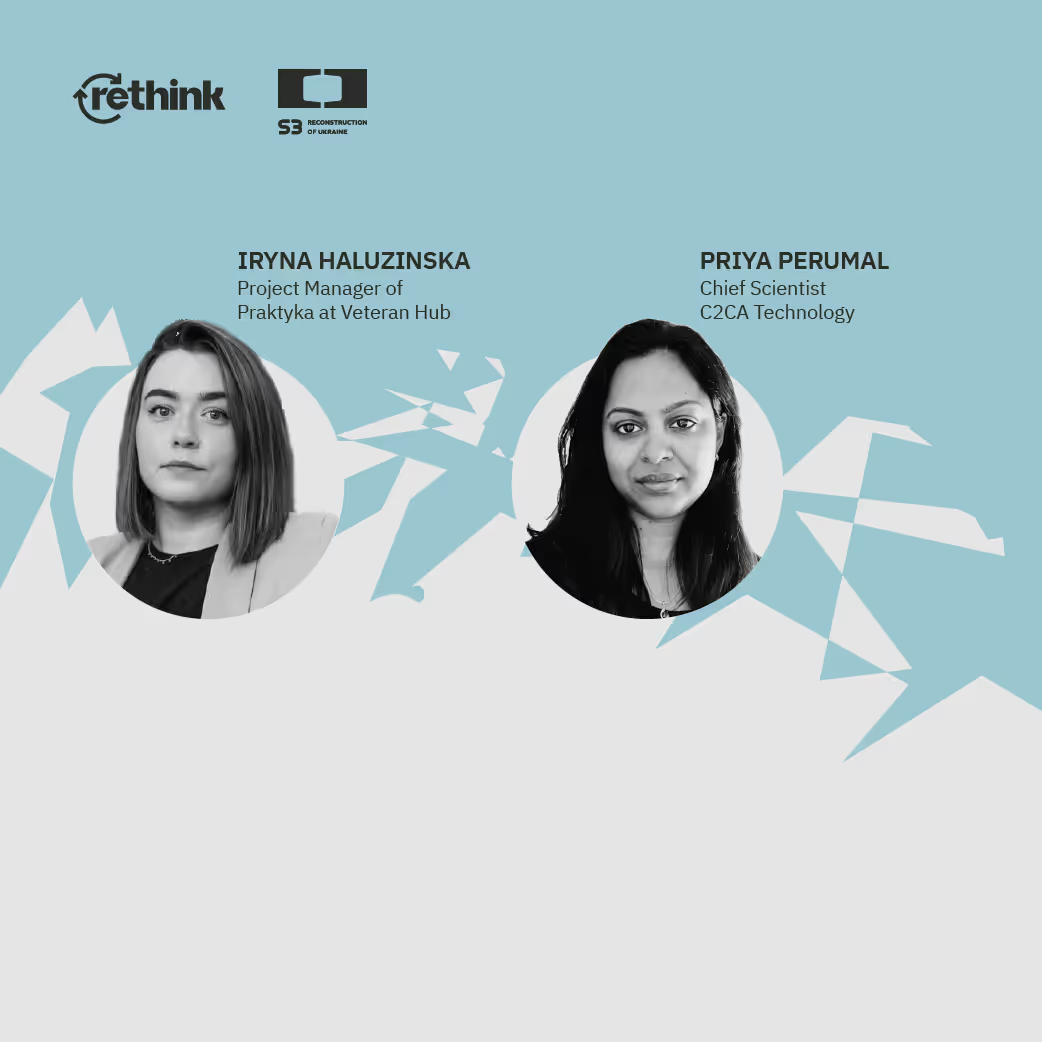Articles
Nov 11, 2025
The Mosaic of Meanings: How Artist Anastasiia Leliuk Revives Ukrainian Monumental Art
Interview with an artist, researcher, and curator on projects restoring cultural heritage

Regularly ensure no new buildings or trees are casting shadows
Et tellus congue praesent pellentesque volutpat laoreet bibendum ut congue sed libero velit sed suscipit amet mattis orci aliquet egestas nibh quis neque vulputate convallis adipiscing magna. Mattis quisque in feugiat in metus laoreet sodales lectus id augue quis pellentesque feugiat luctus malesuada laoreet bibendum nibh augue fames feugiat diam sed. Varius ut eget sollicitudin sed semper sed semper sed nunc sagittis sit at sit.
- Euismod amet rutrum ornare egestas ac nunc ullamcorper mi pretium
- Mauris aliquet faucibus iaculis dui vitae litum sus ullamco
- Semper pharetra duis purus facilisis nec pretium imperdiet varius
- Molestie eget quis viverra eget eget pulvinar a donec vitae amet
Regularly check the energy output to identify any issues
Sed massa vestibulum lectus suspendisse egestas sit. Interdum vel scelerisque non imperdiet nec euismod enim tristique purus leo fames ut malesuada iaculis nunc ridiculus purus hendrerit mauris netus nunc arcu nulla hac parturient elementum proin. Malesuada commodo mi arcu sit adipiscing turpis nullam dignissim phasellus cras sagittis et sit blandit vestibulum vitae eget nulla vel dictum elementum in feugiat vel volutpat libero porta sed.

Have a professional periodically inspect and service the system
Nibh tellus arcu aliquam in pellentesque ultricies non nisi suspendisse laoreet est felis placerat bibendum nisl fermentum ut et eget lacus lectus aliquet egestas nullam suspendisse vulputate dictum tempus ullamcorper mattis ultrices suscipit ipsum vitae arcu est volutpat suscipit dolor gravida netus massa lacinia maecenas dictum facilisis eu.
- Ut est dui porttitor vitae diam cras faucibus urna diam proin ultrices
- Mauris aliquet faucibus iaculis dui vitae ullamco
- Sapien tempus nec scelerisque praesent mattis vitae commodo
- Justo at dictum fames condimentum nisl tellus mauris fermentum
Be cautious not to put stress on the panels
Nibh tellus arcu aliquam in pellentesque ultricies non nisi suspendisse laoreet est felis placerat bibendum nisl fermentum ut et eget lacus lectus aliquet egestas nullam suspendisse vulputate dictum tempus ullamcorper mattis ultrices suscipit ipsum vitae arcu est volutpat suscipit dolor gravida netus massa lacinia maecenas ictum facilisis eu.
“At scelerisque elementum vitae sed et posuere adipiscing est pulvinar id proin eget posuere odio dictumst mi interdum”
Prevent birds, rodents, and insects from nesting under panels
Sit nulla nec vitae odio orci phasellus metus diam leo est nisi morbi arcu vitae urna sit platea ligula non quis non aliquam in posuere mi egestas nunc ac vitae sed nunc auctor justo orci id ut neque ac nec. In quam eget volutpat urna consequat sit morbi tristique lobortis urna convallis lectus ac.
Follow all guidelines to maintain the warranty validity
Praesent magna turpis tellus nisl tortor est nisl nulla neque sed nisi enim cras in vitae aliquam. Posuere ultrices hac consectetur nulla odio at vitae egestas dis vestibulum risus amet viverra tortor tincidunt nascetur platea ultricies fermentum nibh nulla in lorem lectus adipiscing pretium sit condimentum nullam in eu in lorem cras proin.
Mosaic is not just an art form — it’s a part of Ukraine’s cultural heritage. The technique of assembling mosaics dates back to ancient times. In Ukraine, it has undergone several revivals, each shaped by the country’s shifting political landscape.
During the Soviet period, mosaics were used as tools of Russian propaganda — and at the same time, as quiet acts of Ukrainian cultural resistance.
What happens to these mosaics today? How does artist Anastasiia Leliuk work to restore them, create new ones, and engage local communities in the process? This story explores her path, her motivations, and her vision for the future of Ukrainian monumental art.
The word mosaic comes from the Latin musaicum — “dedicated to the Muses.” It describes an artistic composition made of small fragments of stone, smalt, glass, or tile. Each mosaic tells a story — a visual narrative crafted with materials and color.
Early mosaics were made of natural stones. With the invention of smalt — colored glass in Byzantium, the art form became more vivid, durable, and expressive.
Anastasiia Leliuk is an artist working in the field of monumental art. Her interest in mosaics began during her learning a technique that bridges architecture and fine art at an art academy.
“In 2014, during the period of decommunization in Ukraine, monumental art came under more active destruction — and, as a result, more active study. That’s when I began working on art projects in Dnipro as part of Studios of Living History by Insha Osvita, which supported decentralization. Together, with my friend and researcher of monumental art, Tetiana Zhuriі, we organized tours and workshops to promote the idea of preserving these works.”
Today, Anastasiia focuses on restoring mosaics, though she occasionally creates new ones.
“Creating new mosaics is the next stage — one we are just approaching. But restoration feels more urgent. Many mosaics without official heritage status are simply decaying. I don’t want to lose what can still be saved.”
One of Anastasiia’s recent projects, curated in collaboration with cultural manager Tetiana Tadai, is a mosaic created for the “Obrii Trypillia” shopping center in Kyiv region. The developers were inspired by Borovyter, an exhibition dedicated to Ukrainian artist Alla Horska, a monumental artist, dissident, and human rights activist who became a symbol of artistic resistance in the 20th century. Horska’s fearless defiance of Soviet oppression ultimately cost her life: she was murdered by the Soviet secret services.
“That exhibition made people realize that mosaic is a powerful technique — and reminded us of Soviet monumental propaganda in the 1960s, when Alla worked. For Ukrainians, mosaics became a tool of resistance. Artists were commissioned to depict ‘leaders,’ yet they sought ways to create something more profound. It was an act of reclaiming Ukrainian identity — of searching for and shaping it.”
For the Trypillia project, Anastasiia drew inspiration from Trypillian culture, using its ancient motifs to reflect the region’s history.
Kyivan Rus (11th–12th centuries). Ukraine’s oldest mosaic heritage lies in St. Sophia Cathedral, created by Byzantine and Ukrainian masters. Mosaics from St. Michael’s Golden-Domed Monastery were dismantled by the Soviet authorities in 1937 and taken to Russia, and have never been returned.
Postwar period. After two wars, rapid and economical reconstruction was necessary.A decree to “simplify architectural forms” was issued in 1995, leading to the rise of Khrushchevka apartment blocks — quick and affordable buildings designed to meet urgent housing needs. To add visual interest to these plain structures, mosaics were incorporated on facades. However, their themes were strictly controlled.
Monumental propaganda (1960s). The Soviet regime started using mosaics as instruments of propaganda even more, glorifying the Party, labor, industrialization, and space exploration. Mosaics became emblems of the Soviet ideological landscape.
In the 1960s–1980s, a new generation of artists — the Sixtiers — emerged in Kyiv, Lviv, and Dnipro. Through monumental art, they sought to preserve Ukrainian identity. Mosaics became a form of quiet defiance and national expression.
After the collapse of the USSR, state support for monumental art disappeared. Today, most new mosaics are created for churches or private commissions. The cultural meaning of the medium remains deeply rooted in Ukraine’s history.
During Soviet times, large-scale artistic projects were approved only through official channels — under the strict control of the Artists’ Union and the Communist Party. Yet artists found creative ways to embed Ukrainian imagery despite censorship.
“For example, Ada Rybachuk and Volodymyr Melnychenko incorporated motifs inspired by Maria Prymachenko — whose art was banned — into the interior of the Kyiv Palace of Children and Youth.
To avoid censorship, they invited a friend to pretend to film an ‘official’ report of the unveiling, though the camera had no film. This act created the illusion of prior approval and allowed the work to survive.”
In addition to working with mosaics, Anastasiia explores land art — creating artworks from natural and eco-friendly materials that coexist with their environment.
“It’s an art of minimal interference. The idea is not to produce new materials, but to engage in dialogue with nature.”
During her participation in the Mythogenesis Land Art Festival in Ukraine, she learned to design installations that organically blend into landscapes — a continuation of her philosophy of restoration and connection.
Mosaic is not just an art form — it’s a part of Ukraine’s cultural heritage. The technique of assembling mosaics dates back to ancient times. In Ukraine, it has undergone several revivals, each shaped by the country’s shifting political landscape.
During the Soviet period, mosaics were used as tools of Russian propaganda — and at the same time, as quiet acts of Ukrainian cultural resistance.
What happens to these mosaics today? How does artist Anastasiia Leliuk work to restore them, create new ones, and engage local communities in the process? This story explores her path, her motivations, and her vision for the future of Ukrainian monumental art.
The word mosaic comes from the Latin musaicum — “dedicated to the Muses.” It describes an artistic composition made of small fragments of stone, smalt, glass, or tile. Each mosaic tells a story — a visual narrative crafted with materials and color.
Early mosaics were made of natural stones. With the invention of smalt — colored glass in Byzantium, the art form became more vivid, durable, and expressive.
Anastasiia Leliuk is an artist working in the field of monumental art. Her interest in mosaics began during her learning a technique that bridges architecture and fine art at an art academy.
“In 2014, during the period of decommunization in Ukraine, monumental art came under more active destruction — and, as a result, more active study. That’s when I began working on art projects in Dnipro as part of Studios of Living History by Insha Osvita, which supported decentralization. Together, with my friend and researcher of monumental art, Tetiana Zhuriі, we organized tours and workshops to promote the idea of preserving these works.”
Today, Anastasiia focuses on restoring mosaics, though she occasionally creates new ones.
“Creating new mosaics is the next stage — one we are just approaching. But restoration feels more urgent. Many mosaics without official heritage status are simply decaying. I don’t want to lose what can still be saved.”
One of Anastasiia’s recent projects, curated in collaboration with cultural manager Tetiana Tadai, is a mosaic created for the “Obrii Trypillia” shopping center in Kyiv region. The developers were inspired by Borovyter, an exhibition dedicated to Ukrainian artist Alla Horska, a monumental artist, dissident, and human rights activist who became a symbol of artistic resistance in the 20th century. Horska’s fearless defiance of Soviet oppression ultimately cost her life: she was murdered by the Soviet secret services.
“That exhibition made people realize that mosaic is a powerful technique — and reminded us of Soviet monumental propaganda in the 1960s, when Alla worked. For Ukrainians, mosaics became a tool of resistance. Artists were commissioned to depict ‘leaders,’ yet they sought ways to create something more profound. It was an act of reclaiming Ukrainian identity — of searching for and shaping it.”
For the Trypillia project, Anastasiia drew inspiration from Trypillian culture, using its ancient motifs to reflect the region’s history.
Kyivan Rus (11th–12th centuries). Ukraine’s oldest mosaic heritage lies in St. Sophia Cathedral, created by Byzantine and Ukrainian masters. Mosaics from St. Michael’s Golden-Domed Monastery were dismantled by the Soviet authorities in 1937 and taken to Russia, and have never been returned.
Postwar period. After two wars, rapid and economical reconstruction was necessary.A decree to “simplify architectural forms” was issued in 1995, leading to the rise of Khrushchevka apartment blocks — quick and affordable buildings designed to meet urgent housing needs. To add visual interest to these plain structures, mosaics were incorporated on facades. However, their themes were strictly controlled.
Monumental propaganda (1960s). The Soviet regime started using mosaics as instruments of propaganda even more, glorifying the Party, labor, industrialization, and space exploration. Mosaics became emblems of the Soviet ideological landscape.
In the 1960s–1980s, a new generation of artists — the Sixtiers — emerged in Kyiv, Lviv, and Dnipro. Through monumental art, they sought to preserve Ukrainian identity. Mosaics became a form of quiet defiance and national expression.
After the collapse of the USSR, state support for monumental art disappeared. Today, most new mosaics are created for churches or private commissions. The cultural meaning of the medium remains deeply rooted in Ukraine’s history.
During Soviet times, large-scale artistic projects were approved only through official channels — under the strict control of the Artists’ Union and the Communist Party. Yet artists found creative ways to embed Ukrainian imagery despite censorship.
“For example, Ada Rybachuk and Volodymyr Melnychenko incorporated motifs inspired by Maria Prymachenko — whose art was banned — into the interior of the Kyiv Palace of Children and Youth.
To avoid censorship, they invited a friend to pretend to film an ‘official’ report of the unveiling, though the camera had no film. This act created the illusion of prior approval and allowed the work to survive.”
In addition to working with mosaics, Anastasiia explores land art — creating artworks from natural and eco-friendly materials that coexist with their environment.
“It’s an art of minimal interference. The idea is not to produce new materials, but to engage in dialogue with nature.”
During her participation in the Mythogenesis Land Art Festival in Ukraine, she learned to design installations that organically blend into landscapes — a continuation of her philosophy of restoration and connection.
Event Schedule
Lorem ipsum dolor sit amet consectetur. Sit ut gravida aenean potenti. Metus in eu vel morbi dui nunc tellus. Non a massa maecenas massa.


